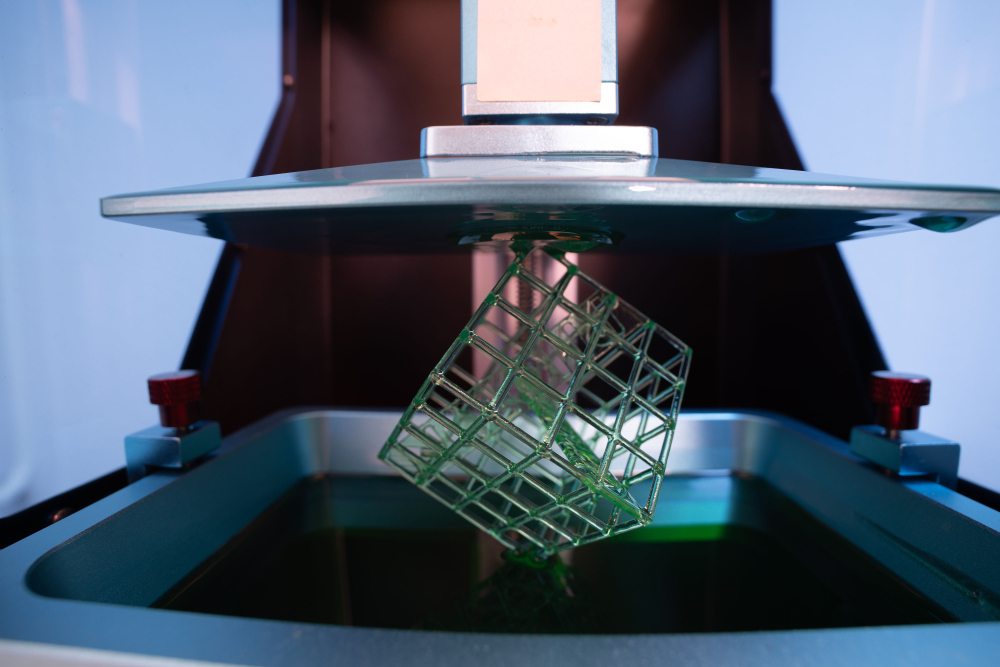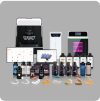
4 Low Volume Manufacturing Strategies Leveraging 3D Printing to Reduce Cost and Risk
Reducing upfront investment costs and enabling manufacturing sites to support a broader product portfolio, low volume manufacturers can decrease risk and produce new products more cost-effectively.
Manufacturing new products is challenging for companies with low volumes as it requires high upfront investment in tooling. There are also financial risks from changes in market demand and manufacturing in countries with greater turmoil. Companies insulate themselves from risk by imposing minimum order quantities and demanding higher product margins.
3D printing systems eliminate the need for tooling which decreases upfront costs, reduces the inventory on hand requirement, speeds up design to production cycles, and enables a more diverse set of products manufactured at any one site. The flexibility and agility allow companies to easily implement low volume manufacturing strategies that can make them more competitive.

Eliminating Tooling Reduces Upfront Costs and Keeps You Agile
Low volume manufacturing using conventional methods carries significant upfront costs, as tooling must be designed for each product and variation, such as a different size. During a manufacturing feasibility assessment, it is not uncommon for the design and tooling, such as molds, to undergo several iterations before achieving production with acceptable yield, quality, and throughput. And, when the product changes, the design and tooling may go through additional cycles to ensure similar or better results.
In contrast, with advancements in 3D printing, machines used for prototyping can also be used for production – reducing or eliminating manufacturing feasibility cycles. 3D printing technology also does not require tooling and can produce a range of products with a variety of materials on a single machine. With 3D printing, manufacturers can implement the following low volume manufacturing strategies to reduce cost and risk:
1. High-Mix, Low Volume Manufacturing
A high-mix strategy involves producing multiple products, where each product may be unique. Traditional factory lines, however, are designed to produce a single to a small mix of products to keep tooling costs low.
3D printing enables a high mix of products to be manufactured on a line or at a site as there is no tooling and a single machine can produce a variety of new products with a wide range of materials. With greater flexibility, low volume manufacturers can spread their cost and risk across a broader product portfolio, making them less susceptible to changes in customer demand and better compete with high volume manufacturers.
2. Just-in-Time Manufacturing
Just-in-time manufacturing or on-demand manufacturing enables companies to reduce risks from high on-hand inventory. Rather than producing a high volume of products and holding a large quantity of inventory, the manufacturer only starts production after an order is received from the customer. The effectiveness of this strategy relies on the flexibility of 3D printing to produce multiple products without retooling time or costs.
A just-in-time strategy makes the customer and manufacturer more agile, enabling faster response to market demand volatility and eliminates the risk of finances being locked up in unsold inventory. Customers can quickly adapt their product lines to changing consumer tastes and manufacturers do not need to rely on high-volume orders to cover their capital investment. Customers can also get new products to market more quickly, meeting demand faster than competitors.
3. Manufacturing Complex Products
In traditional manufacturing, after a product is designed, it needs to be adapted to the manufacturing process to maximize yield. Often, there are multiple redesign cycles before the product can be manufactured at scale. For high volume manufacturers, product designs need to be simplified as complexity increases tooling cost, resulting in higher manufacturing costs.
With 3D printing, design complexity is decoupled from manufacturing cost enabling higher performance designs that traditionally were uneconomical to produce. Greater design freedom enables low volume manufacturers that leverage 3D printing to produce more complex, tailored products. They can also perform better than products manufactured with traditional high volume production methods and simplified designs. Additionally, low volume manufactures can leverage 3D printing to test and get to market faster without the expense of complicated tooling, assembly labor, and overhead associated with traditional manufacturing.
Advancements in 3D printing is also making scaling of complex parts from functional prototypes to finished production products easier. Next-generation 3D printing technologies enable prototype and production products to be produced with the same 3D printing solution, reducing the risk that the final product is not the same as the prototype and ensuring production capacity is ready to meet market demand irrespective of complexity.
4. Moving Manufacturing Closer to the Customer
Many manufacturing sites are in countries that have low labor costs and higher risk – political instability, limited infrastructure, or prone to natural disasters. 3D printing does not require expensive tooling and can eliminate manual work –printing a single part that eliminated the labor steps required for traditionally manufactured multiple piece assemblies. A single 3D printed part can replace a product that traditionally was manufactured as multiple pieces that required assembly. With lower setup costs for new products and reduced manual labor, 3D printing can be located in higher-cost countries that have seen manufacturing move overseas. Companies can also be more strategic in where sites are located to reduce risk from external factors and tax implications, as well as enable manufacturing to be close to the customer in support of new business models such as mass customization, fast turnaround time, and made to order.
Implement These Low Volume Manufacturing Strategies With
3D printing enables a range of low volume manufacturing strategies. For smaller manufacturers, 3D printing helps reduce risk by allowing your factory line to be more diversified in the products it can produce – increasing agility to meet market demand and enabling more competitive pricing.
For larger manufacturers, these strategies allow portions of their supply chain and product lines to be brought in-house as well as reduce their holding inventory or replenishing stock. It reduces supply chain risk without major impacts to cost.
With today’s additive manufacturing technology extending to industries as diverse as athletic footwear, automotive parts, aerospace, and dental, 3D printing enables these low volume manufacturing strategies and many more. Additionally, thanks to advancements like LuxCreo’s LEAP (Light Enabled Additive Production) process, goods can be printed as fast as 120 cm/h, helping low volume manufacturers scale to high-mix or high volume production on-demand.
For more information on how our services can improve your supply chain and manufacturing processes, visit our contact page or call (650) 336-0888.
Subscribe to Our Newsletter
Be the first to get our latest updates and free trials!
Popular Resources
Follow Us
Featured Products

4D Aligner™
First Smart ActiveMemory™
Aligner

iLux Pro Dental Solution
Ultimate 1-Click Dental
Application Solution

LuxCloud Dental
Your One-stop Digital Dentistry
Platform





